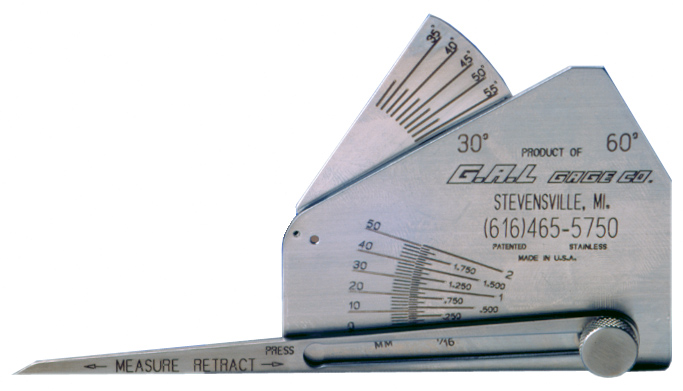Discovering the Advantages of Fillet Welding in Construction: Cost-effective Solutions for Diverse Industries
In the realm of construction, the utilization of fillet welding offers a compelling proposition for industries looking for cost-efficient remedies without jeopardizing architectural honesty. The benefits of fillet welding prolong beyond mere financial cost savings to incorporate improved structural performance, convenience throughout diverse commercial applications, and the guarantee of remarkable strength and resilience. As we browse with the useful benefits that fillet welding deals, a deeper understanding arises of exactly how this welding technique can change manufacture processes across different markets.

Cost-efficient Remedy for Manufacture
Fillet welding offers as an economical option in fabrication procedures, offering both efficiency and longevity. This welding technique involves joining 2 pieces of metal at an angle, developing a triangular cross-section. The simplicity of fillet welding makes it a prominent choice in different sectors, consisting of building, automotive, and production.
Among the key benefits of fillet welding is its ability to decrease product and labor costs. By using fillet welds rather than various other intricate joint designs, producers can conserve cash on materials and manufacturing time. Additionally, fillet welding requires very little prep work contrasted to various other welding strategies, better lowering fabrication costs.
In addition, fillet welds use excellent structural strength, guaranteeing the durability and toughness of the made parts. The triangular form of the weld disperses stress and anxiety extra evenly, reducing the likelihood of joint failing (Gauge Fillet Weld). This architectural honesty not just improves the general high quality of the completed product but also reduces repair and maintenance costs in the future
Boosted Architectural Effectiveness With Fillet Welding
Enhancing structural efficiency through the application of fillet welding techniques is a vital element of ensuring optimum performance and resilience in produced structures. Fillet welding plays a key duty in boosting architectural efficiency by properly distributing tons and stresses throughout the welded joints. By developing a smooth transition between the linked elements, fillet welds help to boost the general strength and security of the structure.
Among the considerable advantages of fillet welding in improving structural performance is its capability to join products of varying densities. This flexibility permits for the building and construction of lightweight frameworks without jeopardizing on strength. Furthermore, the smooth profile of fillet welds minimizes stress and anxiety concentrations, which can aid avoid early failure of the bonded joints.
Additionally, fillet welding makes it possible for the construction of intricate geometries with simplicity, giving designers with even more freedom in producing cutting-edge and efficient structures. By enhancing the design and her explanation placement of fillet welds, designers can maximize the structural performance of fabricated elements, eventually leading to cost financial savings and improved efficiency in diverse markets.
Adaptability in Diverse Industry Applications
With its capability to cater to a vast variety of product thicknesses and geometric complexities, fillet welding stands as a functional construction strategy that discovers applications throughout diverse sectors. Furthermore, the aerospace industry depends on fillet welding for the fabrication of airplane elements, making sure strength and resilience in vital parts. Generally, the flexibility of fillet welding makes it an essential process in various sectors, providing cost-efficient services for intricate fabrication requirements.

Superior Stamina and Durability
Fillet welding plays an important function in achieving these features due to its ability to provide significant strength by distributing lots evenly throughout the welded joint. As a result, frameworks fabricated utilizing fillet welds exhibit boosted resilience and can hold up against considerable mechanical pressures without endangering their integrity.
The remarkable toughness and sturdiness supplied by fillet welding make it an optimal selection for applications in industries such as building and construction, automotive, aerospace, and manufacturing, where architectural integrity is critical. By utilizing fillet welds in fabrication, designers and suppliers can make certain that their products satisfy rigorous quality and safety and like it security standards while enhancing cost-effectiveness and manufacturing efficiency. In essence, the phenomenal resilience and longevity provided by fillet welding make it a favored welding method for developing sturdy and robust structures across diverse industries.
Practical Benefits of Fillet Welding
Given the demonstrated superior strength and sturdiness in welded joints, the useful benefits of fillet welding extend beyond structural integrity to include efficiency and cost-effectiveness in fabrication procedures. One crucial practical benefit is the simplicity of fillet welds, which do not require intricate or costly devices to create. This simplicity converts right into time cost savings during fabrication, as fillet welding see this site can be quickly used in different settings without the need for elaborate arrangements. In addition, fillet welding enables enhanced efficiency due to its versatility in signing up with different types of products, thicknesses, and shapes. The versatility of fillet welds makes them suitable for a variety of applications across varied sectors, even more contributing to cost-effectiveness in producing processes. Furthermore, the reduced demand for substantial surface prep work compared to various other welding methods minimizes product waste and reduces production downtime. Overall, the functional advantages of fillet welding make it an important selection for companies seeking effective and affordable options in fabrication.
Conclusion
Finally, fillet welding provides a cost-efficient remedy for manufacture, giving boosted architectural performance, versatility in diverse industry applications, superior strength, and sturdiness. The useful benefits of fillet welding make it a favored option for different manufacture tasks throughout various sectors. Its ability to efficiently join materials while maintaining structural integrity makes it an important technique for ensuring top quality and dependable lead to welding applications.

In addition, fillet welding calls for minimal preparation compared to other welding techniques, even more reducing construction expenses.

Offered the demonstrated superior stamina and sturdiness in welded joints, the functional benefits of fillet welding expand beyond architectural stability to encompass performance and cost-effectiveness in construction processes - Gauge Fillet Weld.In verdict, fillet welding provides an affordable remedy for construction, providing improved structural efficiency, adaptability in diverse sector applications, exceptional toughness, and sturdiness
Comments on “Improving Your Welding Abilities: Focus on Gauge Fillet Welds”